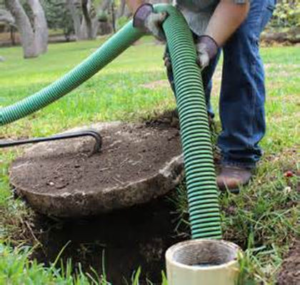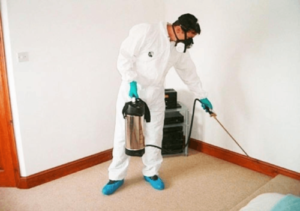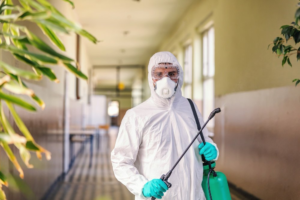Search engine optimization (SEO) is a set of activities that improve the visibility of web pages in search engine results. It requires an understanding of how Google works and its search engine algorithms, including how it interprets users’ queries and the context in which they are expressed.
It also involves understanding how to optimize content for both people and search engines. Click the Visit Website to learn more.

If you’re interested in digital marketing, or even just the web in general, you’ve probably heard the term “keyword” thrown around. However, many new marketers don’t fully understand the importance of keywords or how to use them effectively.
Keywords are words and phrases that people type into search engines to find information about a specific product, service or topic. They’re essential for SEO and PPC campaigns because they’re what search engines use to match users with the most relevant websites. In this blog post, we’ll discuss what keywords are, why they’re important and how to use them effectively.
The first step in creating a successful SEO keyword strategy is finding the right words and phrases that best describe your products and services. To do this, we can use a variety of tools to help us understand what our audience is searching for. For example, we can use tools like SEMRush to see what the average search volume for a particular word is, as well as the competition level and search engine results page (SERP) features. Another tool that we can use to get a better understanding of our audience’s search intent is Ahrefs. Ahrefs provides keyword research, search volume, traffic potential and a range of other helpful information such as related search terms, questions, content ideas and keyword difficulty.
Once we have our list of keywords, we can start to develop a strategy to optimize our website and connect with our audience. Choosing the right keywords is critical because it ensures that we’re connecting with our ideal customers, not just anyone who might be interested in what we have to offer. It’s also important to remember that just because a keyword is popular doesn’t necessarily mean it’s going to be able to drive the most traffic to your site.
For this reason, it’s important to focus on long-tail keywords that are more specific and align with your customer’s intent. Using these keywords will allow you to rank higher and connect with your audience more effectively. In addition, it will also help you establish your business as a thought leader in your industry by proving that you have the answers they’re looking for.
Content
Content is one of the most important aspects of SEO, as it is what search engines use to determine a website’s relevance. Therefore, it is essential to produce high-quality content that meets the needs of your audience and aligns with your SEO objectives. By collaborating with SEO specialists, you can ensure that your content is both engaging and optimized for search engines. This collaboration also fosters a continuous feedback loop between teams, enabling you to continuously improve your content.
In order to create SEO-friendly content, it is necessary to understand the keywords that your target audience uses. This will help you write relevant, valuable articles that answer their questions and provide them with the information they want. Additionally, it is critical to optimize your content for readability. Using headers, subheadings, bulleted lists, and images can help break up walls of text and make the content easier to read. It is also important to avoid overusing keywords, as this can hurt your search engine optimization.
When you’re writing your content, remember that the goal is to establish brand authority and provide value to your audience. This will help you rank higher in search engine results pages and drive more organic traffic to your website. Additionally, by creating quality content that addresses customer pain points and provides solutions, you can build credibility in your industry and improve user engagement.
Another aspect of content SEO is the use of keywords in the title and meta description tags. This will help your content rank better in searches by providing search engines with a more accurate and complete description of the page. It is also important to keep in mind that the snippet that appears in search results is based on the actual content of the page. Therefore, it’s crucial to include the keywords in the title and meta tag of your site, but be sure to do so naturally.
Link building
Link building is one of the most important parts of search engine optimization (SEO). It involves getting other websites to link back to yours, which signals to Google that your website is valuable and relevant. This, in turn, can help you rank higher in search results. There are many different methods for link building, including creating useful content that attracts links naturally, guest blogging, and participating in industry discussions.
A link is a piece of text or other element on a Web page that points to another page, document, or location. It is usually distinguished from other elements on a Web page by being underlined or a different color (usually blue). It is also possible for an image to contain a link, which makes the image itself clickable.
The most effective way to build links is by creating and promoting high-quality content that is valuable to other Web users. This content should be relevant to the topic and audience of the linking site. In addition, the content should be promoted through social media and other channels that reach the right people.
There are several different types of links: nofollow, dofollow, paid, and organic. Nofollow links are ignored by Google, while dofollow links are considered to be legitimate endorsements. Paid links are often used to buy traffic or boost rankings, and organic links are those that occur naturally in a given page.
While quality backlinks are still a significant part of the SEO algorithm, they are not the only factor that contributes to a website’s ranking. It is also essential to consider other factors, such as the website’s content and responsive design.
To create high-quality content, you need to have a good understanding of the audience and market. This will help you determine the topics and keywords that are most popular with your target audience. You can then use these keywords in your content to improve its ranking. Also, be sure to check out the competition’s link profiles and analyze their strategies. Once you’ve done this, you can begin the process of building links.
Analytics
The digital landscape is extremely competitive, and leveraging data analytics is an essential tool for SEO success. It helps shape strategies, identify trends and track performance metrics. In addition, it can help businesses uncover opportunities that their competitors may be missing.
Search engine algorithms consider multiple factors when determining a page’s ranking. To achieve high rankings, a website must exhibit qualities the algorithm deems important. This includes ensuring pages are well-optimised and contain relevant content. In addition, the use of keywords in title tags and meta descriptions is recommended to increase visibility in search engines.
Web analytics tools like Google Analytics and SEMrush are key tools in assessing and improving SEO. These tools provide insights into keyword performance, backlinks and overall site visibility in search engine results pages. By leveraging these tools, marketers can make informed decisions that optimize their SEO strategy and improve their online presence.
The SEO Pages report in GA4 is an invaluable tool for monitoring SEO optimisations and user behaviour on your site. It provides key SEO metrics such as average time spent on the page, a comparison of organic and direct traffic and more. You can easily customize the report by adding your own custom metrics and creating dashboards. You can also create a shortcut to the SEO Pages report on your GA4 homepage for quick access.
Another aspect of SEO that can be monitored using Adobe Analytics is user journeys on your website. This can be useful for identifying gaps in navigation and identifying pages that have the highest bounce rates. By identifying these issues, you can take steps to improve the user experience on your site and increase engagement with your content.
Another helpful feature of Adobe Analytics is its attribution modeling feature, which can help you understand how your SEO efforts contribute to overall site performance. This can be especially useful for analyzing mobile traffic, where the ability to understand how users interact with your website on different devices is particularly important. This information can also be used to improve the effectiveness of your mobile SEO efforts.








